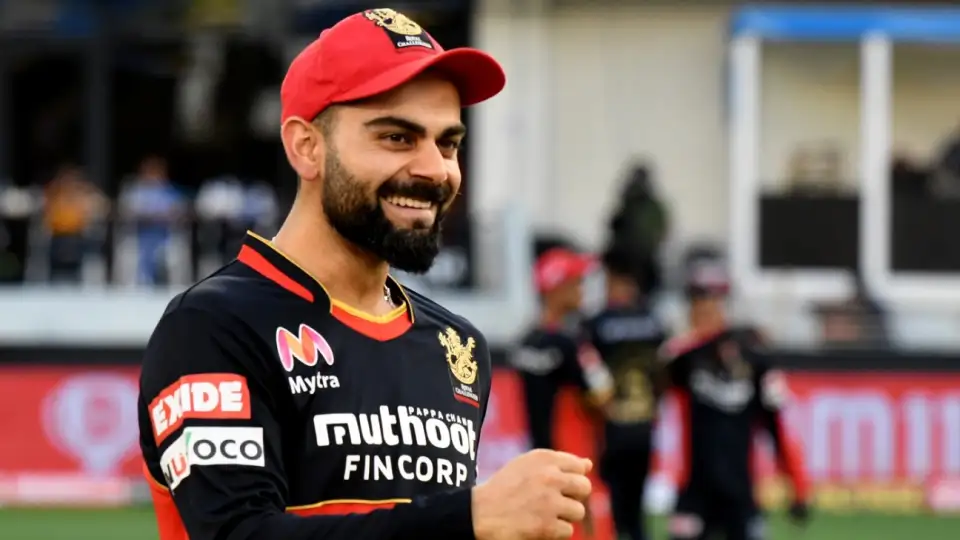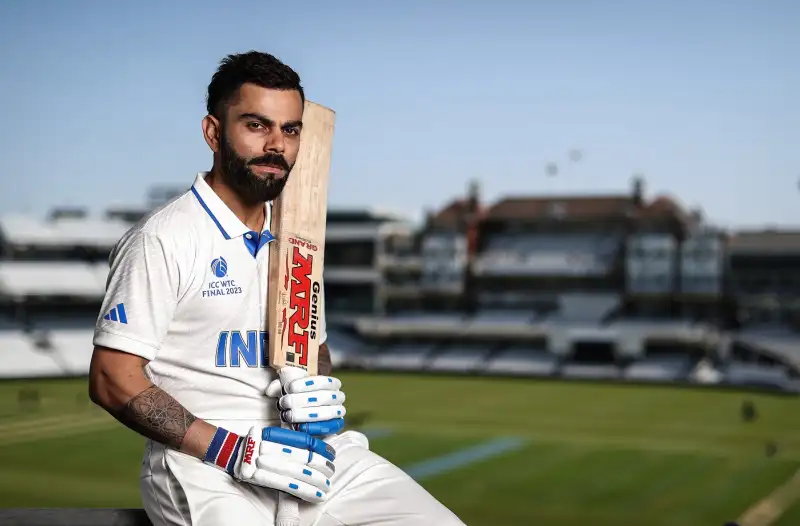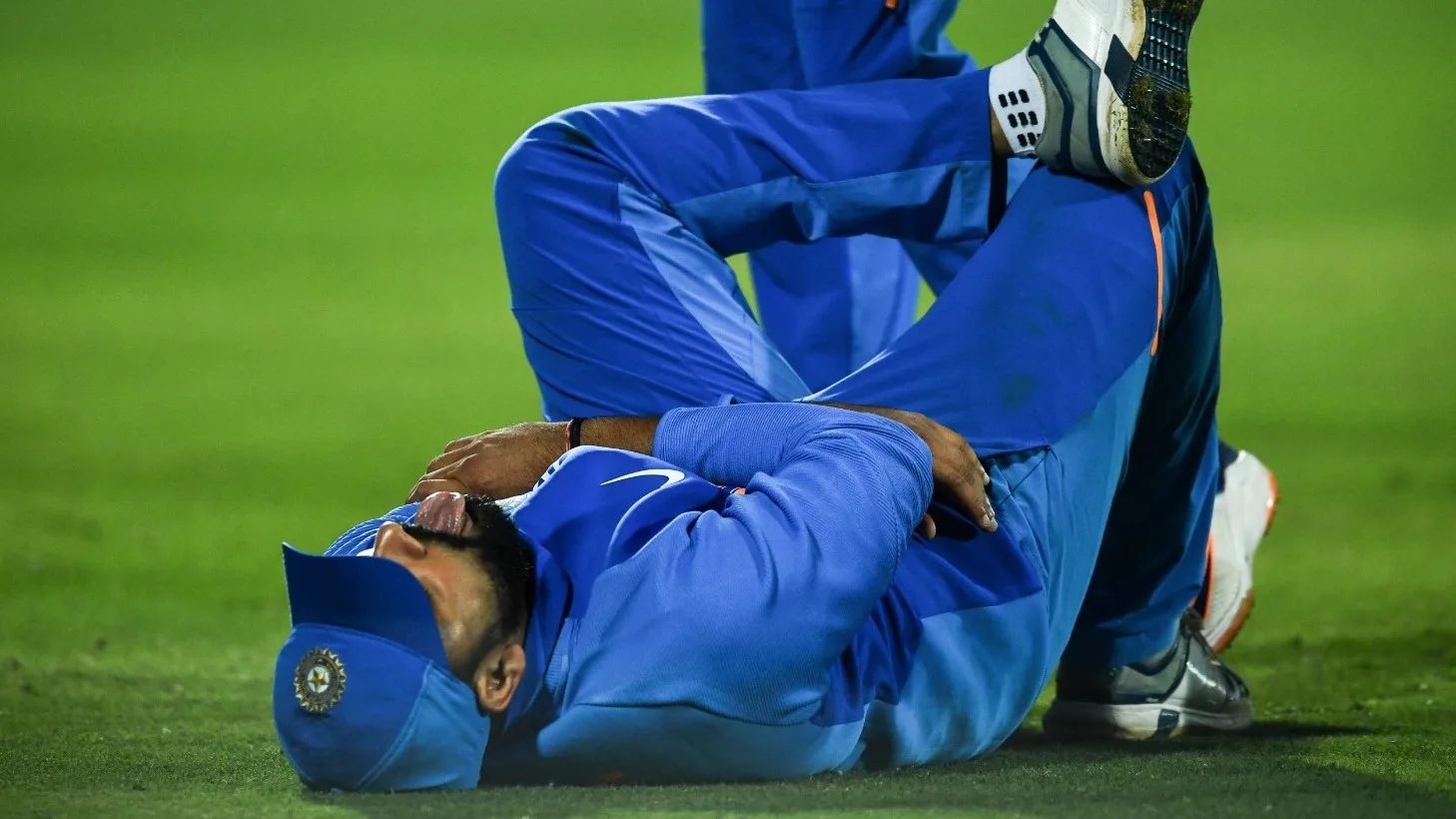IPL Innings Break Time

In the adrenaline-fueled spectacle of the Indian Premier League (IPL), every aspect of the game is meticulously planned and executed to maximize excitement and engagement for players and fans alike. One crucial juncture that stands out in every IPL match is the innings break time that is of 20 minutes – a brief intermission between the two innings that serves as a pivotal moment for teams to regroup, strategize, and recharge for the challenges ahead. Let’s delve into the significance of the IPL innings break time and its impact on the dynamics of the game.
1. Strategic Timeouts (1 Time per Team per Innings)
- Duration: Each team is allocated one strategic timeout of 10 minutes per innings.
- Purpose: This timeout allows teams to huddle and strategize during crucial moments in the match. Captains can discuss bowling changes, batting adjustments, and overall game plans based on the on-field situation.
- When can it be taken? A strategic timeout can be called by the batting team only after the completion of the first six overs of an innings. For the bowling team, it can be called any time after the fall of the first wicket.
2. Innings Break (20 Minutes)
- Duration: The most significant break in the IPL, the innings break lasts for a designated period of 20 minutes.
- Purpose: This extended break serves several critical functions:
- Player and Staff Rejuvenation: Players can rehydrate, regain energy, and address any niggles. Umpires and ground staff also get a well-deserved break.
- Maintaining Competitive Balance: The break prevents fatigue and ensures both teams enter the second innings equally focused for a more competitive match.
- Commercial Revenue Generation: Broadcasters utilize this window to air advertisements, generating revenue that supports the league’s financial ecosystem.
3. Change of Innings (Short Break)
- Duration: This isn’t a designated break but rather a short transition period between innings. It typically lasts for a few minutes.
- Purpose: This short break allows the ground staff to inspect the pitch and make any necessary adjustments. Players switch ends and prepare for their new roles (batting to bowling or vice versa).
4. Drinks Break (Optional)
- Duration: An optional break, it typically lasts for 2-3 minutes.
- Purpose: This break allows players to rehydrate, especially during hot weather conditions. It can be called by the batting team at specific points during the innings, but not more than once every six overs.
Remember:
- The IPL strictly enforces the timings for these breaks to maintain the match schedule.
- The strategic timeouts and drinks breaks add a layer of tactical decision-making, allowing captains to influence the game’s flow.
Various usage of IPL Innings Break Time
Strategic Respite:
The IPL innings break time offers teams a strategic respite from the intensity of the game, allowing them to assess the conditions, evaluate their performance, and devise a game plan for the upcoming innings. Captains and coaches use this time to analyze the pitch, assess the target or chase, and make tactical adjustments to their batting, bowling, and fielding strategies.
Player Preparation:
For cricketers, the innings break time serves as an opportunity to recharge both physically and mentally. Batsmen who have just completed their innings use this time to hydrate, refuel, and recover from the exertions of batting in high-pressure situations. Bowlers, on the other hand, use the break to rest, stretch, and discuss bowling plans with their captain and teammates.
Team Meetings and Strategy Sessions:
One of the most crucial aspects of the innings break time is the team meeting and strategy session conducted by the coaching staff and captain. During these meetings, players discuss their individual roles and responsibilities, analyze the opposition’s strengths and weaknesses, and formulate a cohesive plan to execute during the upcoming innings. These discussions are often accompanied by video analysis and statistical insights to identify key areas for improvement and capitalize on strategic opportunities.
Mental Reset:
Beyond the tactical and physical aspects, the innings break time also provides players with a much-needed mental reset. It allows them to put aside any frustrations or disappointments from the previous innings and approach the game with a renewed sense of focus, determination, and positivity. Captains play a crucial role in fostering a positive team environment during this time, instilling confidence and belief in their players’ abilities.
Entertainment and Engagement:
For fans, the innings break time offers a chance to catch their breath, grab refreshments, and soak in the electrifying atmosphere of the stadium or the comfort of their homes. IPL broadcasters often utilize this time to provide analysis, highlights, and insights from experts, keeping viewers engaged and entertained during the break.
Successful Captains in IPL

In the high-octane realm of the Indian Premier League (IPL), leadership plays a pivotal role in determining a team’s success. Over the years, several captains have risen to prominence, leaving an indelible mark on the tournament with their astute leadership, tactical acumen, and ability to inspire their teams to greatness. Let’s explore the profiles of the top successful captains in IPL history, whose leadership prowess has shaped the destiny of their respective franchises.
1. MS Dhoni (Chennai Super Kings):

Affectionately known as “Captain Cool,” MS Dhoni stands tall as the most successful captain in IPL history. Leading the Chennai Super Kings (CSK) with finesse and flair, Dhoni has guided his team to three IPL titles (2010, 2011, 2018) and multiple playoff appearances. His calm demeanor under pressure, astute game awareness, and knack for finishing matches with his trademark helicopter shot have made him a legend in the annals of IPL history.
Journey of MS Dhoni in the Indian Premier League (IPL)

Since its inception in 2008, the Indian Premier League (IPL) has become a cricketing extravaganza that not only showcases raw talent but also serves as a platform for seasoned veterans to exhibit their prowess. Among these stalwarts stands Mahendra Singh Dhoni, fondly known as “Captain Cool” or “Thala,” whose journey in the IPL has been nothing short of extraordinary.
Dhoni’s tryst with the IPL began in its inaugural season when he was appointed as the captain of the Chennai Super Kings (CSK). Under his astute leadership, CSK quickly became one of the most successful franchises in the league. Dhoni’s captaincy was characterized by calmness under pressure, tactical acumen, and an unwavering belief in his team’s abilities.
One of the defining moments of Dhoni’s IPL journey came in 2010 when CSK clinched their maiden IPL title. Dhoni’s masterful captaincy was instrumental in leading his team to victory, setting a precedent for future triumphs. His ability to make shrewd tactical decisions, coupled with his calm demeanor on the field, earned him widespread admiration from fans and pundits alike.
Dhoni’s impact extended beyond his leadership skills; his batting prowess made him a force to be reckoned with in the IPL. Renowned for his finishing abilities, Dhoni often played the role of a finisher, guiding his team to victory with his calculated yet explosive innings. His remarkable ability to read the game situation and adapt his batting accordingly made him a nightmare for opposition bowlers.
In addition to his leadership and batting heroics, Dhoni’s wicketkeeping skills were second to none. His lightning-fast reflexes and intuitive understanding of the game allowed him to effect crucial dismissals behind the stumps, further solidifying his status as one of the greatest cricketers of his generation.
2. Rohit Sharma (Mumbai Indians):

Rohit Sharma, fondly known as the “Hitman,” has carved a niche for himself as one of the most successful captains in IPL history. Under his stewardship, the Mumbai Indians (MI) have emerged as a dominant force in the tournament, clinching a record-breaking five IPL titles (2013, 2015, 2017, 2019, 2020). Sharma’s tactical nous, strategic planning, and ability to lead from the front with the bat have been instrumental in MI’s unprecedented success.
Rohit Sharma IPL Glory

In the colorful tapestry of the Indian Premier League (IPL), few players have left an indelible mark as profound as Rohit Sharma. Fondly hailed as the “Hitman” for his explosive batting prowess, Rohit’s journey in the IPL epitomizes resilience, adaptability, and sheer brilliance.
Rohit Sharma’s tryst with the IPL began in its inaugural season in 2008 when he represented the Deccan Chargers. Initially regarded as a promising talent, it was during his stint with the Mumbai Indians (MI) that Rohit truly came into his own. In 2011, he was appointed the captain of MI, a decision that would alter the course of both his career and the franchise’s fortunes.
Under Rohit’s captaincy, MI underwent a metamorphosis, evolving from underachievers to one of the most dominant teams in the IPL. Rohit’s leadership style, characterized by calmness under pressure and strategic acumen, played a pivotal role in MI’s unprecedented success. His ability to inspire confidence in his players and extract the best out of them on the field became the hallmark of his captaincy.
One of the defining moments of Rohit’s IPL journey came in 2013 when MI clinched their maiden IPL title. Rohit’s scintillating batting performances throughout the tournament, coupled with his astute captaincy in the crunch moments, propelled MI to glory. His ability to lead from the front with the bat and marshal his troops with precision showcased his multifaceted cricketing acumen.
Rohit’s batting prowess in the IPL is nothing short of legendary. As an opening batsman, he possesses the rare ability to dictate the course of the game from the outset. His effortless strokeplay, impeccable timing, and ability to accelerate at will make him a nightmare for opposition bowlers. With a plethora of records to his name, including the highest individual score in IPL history (a mesmerizing 264 runs), Rohit stands tall as one of the greatest batsmen the IPL has ever witnessed.
3. Gautam Gambhir (Kolkata Knight Riders):

Gautam Gambhir‘s tenure as captain of the Kolkata Knight Riders (KKR) was marked by a resurgence in the fortunes of the franchise. Under his leadership, KKR won two IPL titles (2012, 2014) and emerged as a force to be reckoned with in the tournament. Gambhir’s aggressive captaincy, astute player management, and ability to extract the best out of his team propelled KKR to new heights in the IPL.
Gautam Gambhir: The Leader of IPL

In the annals of the Indian Premier League (IPL), few cricketers have left as profound an impact as Gautam Gambhir. A master of the game’s nuances, Gambhir’s journey in the IPL is a testament to grit, determination, and unyielding leadership.
Gautam Gambhir’s tryst with the IPL began in its inaugural season in 2008 when he was signed by the Delhi Daredevils (now Delhi Capitals). Known for his impeccable technique and ability to anchor innings, Gambhir quickly established himself as a mainstay in the franchise’s lineup. However, it was his stint with the Kolkata Knight Riders (KKR) that would define his legacy in the IPL.
In 2011, Gambhir was appointed as the captain of KKR, a decision that would transform the fortunes of the franchise. Under his stewardship, KKR underwent a remarkable metamorphosis, evolving from underachievers to two-time IPL champions. Gambhir’s leadership style, characterized by aggression, astuteness, and a never-say-die attitude, became the cornerstone of KKR’s success.
One of the defining moments of Gambhir’s IPL journey came in 2012 when KKR clinched their maiden IPL title. Gambhir’s inspirational leadership both on and off the field played a pivotal role in guiding his team to glory. His ability to instill self-belief in his players, back them through thick and thin, and lead from the front with the bat endeared him to fans and teammates alike.
Gambhir’s batting exploits in the IPL are a testament to his class and consistency. As an opening batsman, he formed formidable partnerships at the top of the order, laying a solid foundation for his team’s success. With a plethora of match-winning innings to his name, including crucial knocks in finals, Gambhir etched his name as one of the premier batsmen in IPL history.
4. Shane Warne (Rajasthan Royals):

Shane Warne, the legendary Australian spinner, left an indelible mark on the IPL during his tenure as captain of the Rajasthan Royals. Leading a relatively unfancied team to IPL glory in the inaugural season of the tournament in 2008, Warne’s tactical brilliance, shrewd captaincy, and ability to inspire his team against the odds made him one of the most successful captains in IPL history.
Shane Warne the Indian Premier League

Shane Warne, the legendary Australian cricketer, carved his niche not only in international cricket but also in the dynamic realm of the Indian Premier League (IPL). Known for his mesmerizing spin bowling, tactical acumen, and charismatic personality, Warne’s journey in the IPL is nothing short of magical.
Warne’s association with the IPL began in 2008 when he was appointed as the captain and marquee player of the Rajasthan Royals franchise. Despite being at the twilight of his international career, Warne’s impact in the inaugural season was immediate and profound. He led a relatively unfancied Rajasthan Royals side to an improbable title triumph, showcasing his leadership prowess and cricketing genius.
One of the defining moments of Warne’s IPL journey came in 2008 when he masterminded Rajasthan Royals’ fairy-tale victory. Warne’s strategic brilliance, coupled with his ability to extract the best out of his players, defied all odds and propelled his team to IPL glory. His unorthodox captaincy tactics, astute field placements, and knack for outsmarting opponents made him a revered figure in the IPL fraternity.
Warne’s influence extended beyond his leadership skills; his crafty leg-spin bowling mesmerized fans and bamboozled batsmen alike. Despite his advancing age, Warne continued to bamboozle opposition batsmen with his guile, variations, and uncanny ability to read the game. His knack for picking crucial wickets in crunch situations made him an invaluable asset for Rajasthan Royals.
5. Virat Kohli (Royal Challengers Bangalore):

Virat Kohli, the dynamic Indian batsman, has led the Royal Challengers Bangalore (RCB) with passion and purpose since taking over the captaincy. While RCB is yet to win an IPL title under his leadership, Kohli’s impact as captain cannot be understated. His aggressive approach, never-say-die attitude, and ability to lead by example with the bat have made him one of the most influential captains in the IPL.
Virat Kohli the Indian Premier League

Virat Kohli’s journey with the Royal Challengers Bangalore (RCB) in the Indian Premier League (IPL) has been nothing short of iconic. Since his debut in the IPL in 2008, Kohli has been an integral part of the RCB franchise, evolving from a talented youngster to one of the most revered cricketers in the world. His unwavering commitment, exceptional batting prowess, and leadership skills have made him the heartbeat of RCB. Kohli’s association with RCB reached new heights when he was appointed as the team’s captain in 2013. Under his captaincy, RCB witnessed both highs and lows, but Kohli’s determination to succeed remained unyielding. In 2016, Kohli’s extraordinary batting exploits reached a pinnacle as he amassed a record-breaking 973 runs in a single IPL season. Despite RCB’s quest for an IPL title remaining elusive, Kohli’s passion for the game and his loyalty to the franchise have never wavered. As Kohli continues to lead RCB with aplomb, fans eagerly anticipate each IPL season, knowing that they are witnessing the journey of a cricketing icon who wears his heart on his sleeve.




